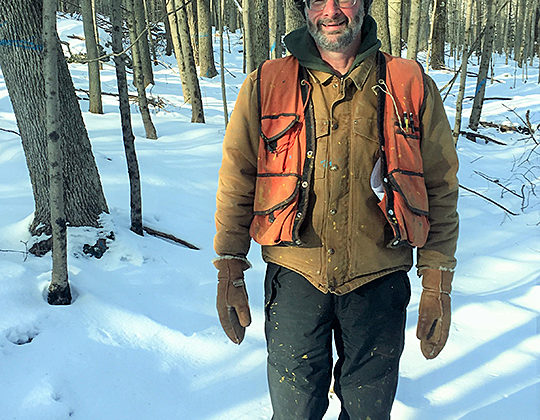State Harvests Ash Trees at Dennis Hill State Park
Emerald ash borer expected in Norfolk this year
By David Beers
Eighty-three years ago, Dr. Frederick Dennis gave his 240-acre Norfolk property to the state to become Dennis Hill State Park. Dennis was a New York City surgeon and an amateur horticulturist. A stipulation of this gift is that the property be kept “in first class condition as an open public park.” Dennis Hill State Park is now administered under the watchful eye of the Connecticut Department of Energy and Environmental Protection (DEEP).
To continue to keep the park in first class condition, white ash trees on 20 acres of the park will be harvested from the property before the emerald ash borer turns these 20 acres into a forest of standing dead trees. The borer kills ash trees by eating the tree’s inner bark (phloem).
The emerald ash borer is an Asian insect that was introduced to North America about 20 years ago in packing crate material. This led to an uncontrolled outbreak of borers in Michigan in 2002. It has since steadily spread out from Michigan and reached the borders of Connecticut in 2012. While it has not been officially found in Norfolk, the borer has been found in neighboring Winsted and Torrington. The borer will likely “officially” be found in Norfolk sometime in 2018.
The CT DEEP has been working to remove ash trees on all types of state land before the ash trees die and become a public hazard. In Western Connecticut, the ash is being harvested from many state forests and a few state parks, including Putnam Memorial State Park in Redding and Mount Tom State Park in Litchfield.
Any proposed DEEP harvest starts with writing a forest management plan that is based on a thorough forest inventory. This plan is then reviewed and edited by experts in wildlife, fisheries and recreation. The plan for Dennis Hill identified two areas with significant amounts of ash trees: a 14-acre area to the west of the picnic site and a 6-acre area to the east of the fields. The timber harvests in these two areas will cut most of the ash trees along with some cull firewood trees. This harvest will remove between two-thirds and three-quarters of the tree canopy.
The DEEP Forester for the project, Jerry Milne, did leave some ash trees standing that have wildlife cavities. He also stipulated that the harvest must be logged only when the ground is dry or frozen. Milne is hopeful that the many young sugar maple and black birch trees in the understory will become the new forest.
Milne is also hopeful that the recent release of parasitic wasps by the Connecticut Agricultural Station will save some of our ash trees in the long term. These wasps feed on the ash borer’s eggs and larvae. While it is too late to stop the current bourgeoning borer population, it is these wasps that may allow some of the small, younger ash to recover after the initial ash die-off that is occurring now.
Despite the promising release of parasitic wasps in Connecticut, Milne said, “Owners of ash trees should plan on those trees dying soon.” For a beloved ash tree in your front yard, regular injections of insecticide will keep the tree alive and free of the borer. Unfortunately, insecticide injections are not cost-effective across our forest landscape.
Like all DEEP timber harvests, this harvest went out to bid to timber buyers (loggers and sawmills) and garnered five bids ranging from $16,800 to $24,600. The trees to be cut were marked with blue paint and tallied by Milne and an assistant to be 127,000 board feet of timber and 135 cords of firewood. The winning bidder was Hull Forest Products, a sawmill in Pomfret, Conn. Milne is actively encouraging Hull to do the work this winter.
The park is open to non-motorized recreation all year, with the auto road open from the third weekend in April to November first. When logging is active, the auto road will be closed, but hikers will be allowed access and will be asked to stay away from any logging activity.
Milne recommends that private landowners with many ash trees in their forest can contact DEEP’s Service Forester, Larry Rousseau, for a free visit to their property to offer guidance on options available to them. Rousseau’s phone number at the DEEP Western District office is 860-485-0226.
Photo, top, by David Beers: Jerry Milne, a state forester, hopes that once the large ash trees are removed, the many young sugar maples in the understory will become the new forest.

